Margarita
Context
Margarita Nikolaevna is the lover of the master. She comforts and cares for him until he, totally upset by the fierce criticism of his novel and his person, ends up in the psychiatric hospital of doctor Stravinsky.
Margarita is despondent because she doesn't know what happened to the master when the devil Woland gets in touch with her through Azazello and asks her to be the hostess on his annual ball. She therefore learns about witchcraft and soon has the taste of being invisible and being able to fly. She fulfills the task of hostess more than adequately. She can make a wish in exchange for her help. After having made a rather confusing wish, she wished to be reunited with her beloved master. And so it happened.
We only get to know Margarita's name in Part II of the novel. In Part I, the master had told Ivan that he would never tell her name to anyone.
Prototype
The main real life prototype for the character of Margarita was Bulgakov's third wife Elena Sergeevna Shilovskaya (1893-1970), born Nyurenberg. Like the master and Margarita, they were both married when they met, and they fell in love immediately.
Elena Sergeevna was married to army officer Yevgeny Aleksandrovich Shilovsky (1889-1952), who was then Chief of Staff of the Moscow district. She met Bulgakov at the apartment of the Moiseenko brothers who lived in the Nirnzee house, in no. 10, apartment 527 at the Bolshoy Gnezdnikovsky pereulok, a side lane of the Tverskaya ulitsa. In the novel, the master and Margarita met for the first time when Margarita «turned down a lane from Tverskaya».
We know little about the Moiseenko brothers. They were artists, and Mikhail Bulgakov would have known them in Kyiv, but he was not font of them. In a letter to her brother Aleksander Sergeevich Nyurenberg (1890-1964), Elena Sergeevna wrote on February 13, 1961, that she did not want to go to the Moiseenko brothers at the time, but that they had convinced her by saying that «the famous Bulgakov» would also be there, along with «other interesting people», which were «not mentioned by name».
There is, however, some uncertainty about the date on which this meeting took place. On January 4, 1956, Elena Sergeevna noted in her diary that she first met Bulgakov, who was accompanied by his second wife, Lyubov Yevgenyeva Belozerskaya (1894-1987) on [Thursday] February 28, 1929.
But in the above mentioned letter to her brother, she wrote that she met Bulgakov on the occasion of Масленица [Maslenitsa], a public holiday comparable to the European carnival, on which often pancakes are made. In 1929, however, the Maslenitsa festival was not on [Thursday] February 28, but on [Sunday] March 17.
Anyway, in the time they met, Bulgakov was, like the master, in an ужасный душевный состояние or an awful mental state, as Elena Sergeevna wrote, while she was, like Margarita, in a situation in which «many women would have given anything to exchange their lives for the life of Margarita Nikolaevna».
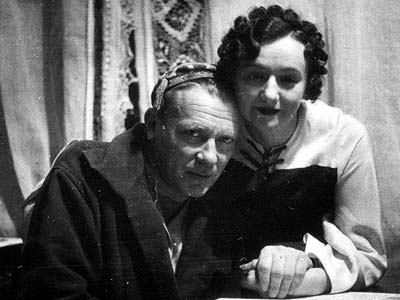
Bulgakov and Elena Sergeevna
It may be interesting to compare Elena Sergeevna's remembrance of her first meeting with Mikhail Bulgakov with the version of Lyubov Yevgenyeva Belozerskaya (1894-1987). In her book My Life with Mikhail Bulgakov, which she wrote in 1968-1969, she said: «In 1929 or 1930, M.A. and I once went to visit his old acquaintances, the Moiseenkos (they lived in the Nirenzee House on Gnezdnikovsky). An interesting lady with nicely styled hair was sitting at the table - Elena Nyurenberg, whose married name was Shilovskaya. She soon became my friend and began to visit us at home often and without ceremony.» This description was laconically followed by the comment: «That is how this woman who later became M.A. Bulgakov's third wife entered the orbit of our family.»
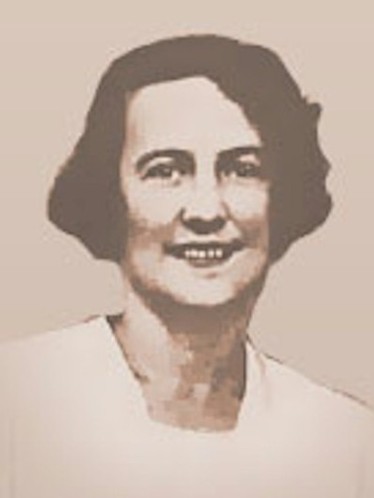
Lyubov Yevgenyeva Belozerskaya
The Margarita's
Mikhail Bulgakov took the name Margarita from, among others, Gretchen, a protagonist in the first part of the book Faust by Johann Wolfgang von Goethe (1749-1832). Gretchen is a German diminutive for Margarita. Faust immediately falls in love with her and asks for the help of the devil to get her.
In chapter 22 of The Master and Margarita, Koroviev refers to «one of the French queens of the sixteenth century», and suggests that Margarita could be her «great-great-great-granddaughter». He referred to Marguerite de Valois (1553-1615), whose marriage to Henri de Navarre (1553-1610), the later French King Henri IV, was the pretext for the infamous Saint Bartholomew's night in Paris. In that night from August 24 to 25, 1572, a mass murder took place on Protestant Huguenots. The marriage of Marguerite and Henri knew much mutual deception and long periods of separation. In 1599 it was dissolved, but Marguerite was allowed to keep her title of queen.
Marguerite de Valois was the daughter of Catherine de Medici (1519-1589) and was often called Reine Margot or Queen Margot. In the novel Margarita is also often called Margot, often in combination with the title queen.
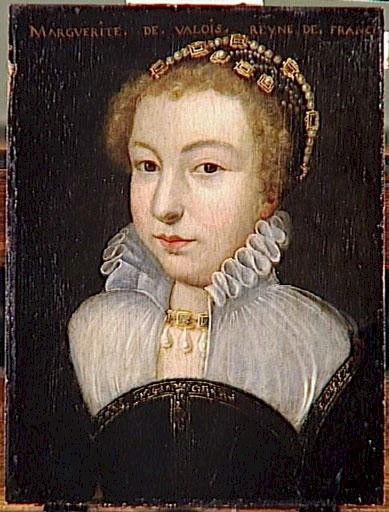
Marguerite de Valois
And then there was Marguerite de Navarre (1492-1549). She was the sister of François I (1494-1547), who was the grandfather of the Marguerite de Valois mentioned before. Marguerite de Navarre herself was the grandmother of Henri IV, with whom Marguerite de Valois got married later. Confusing? Well... on the library site of the University of Angers, the confusion is even bigger since they describe Marguerite de Navarre as Marguerite de Valois, queen of Navarre. No wonder Bulgakov merged them into one character.
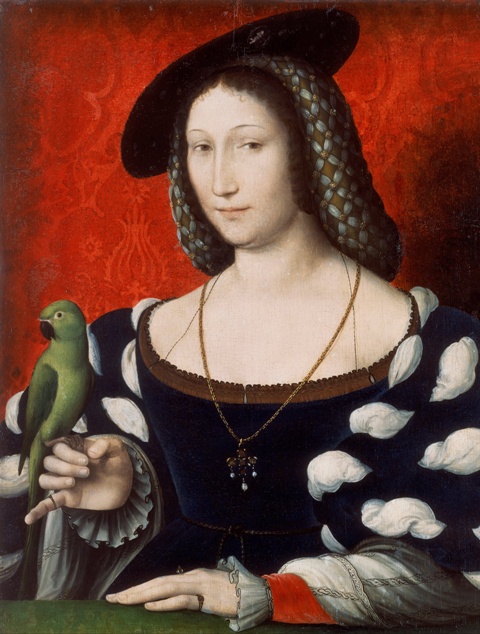
Marguerite de Navarre
Other interpretations
The stubborn Ukrainian polemist Alfred Nikolaevich Barkov (1941-2004) stated that Elena Sergeevna Shilovskaya would not have been the prototype for Margarita. He argues it was Maria Fyodorovna Yurkovskaya (1868-1953), an actress of the Moscow Art Theater MKhAT and better known under the pseudonym Maria Andreeva. She was the mistress of the Russian author Maxim Gorky (1868-1936). Gorky himself would then be the prototype of the master, and Margarita would have been a prostitute sent to him by Woland, who, himself, would have been the personification of Vladimir Lenin (1870-1924).
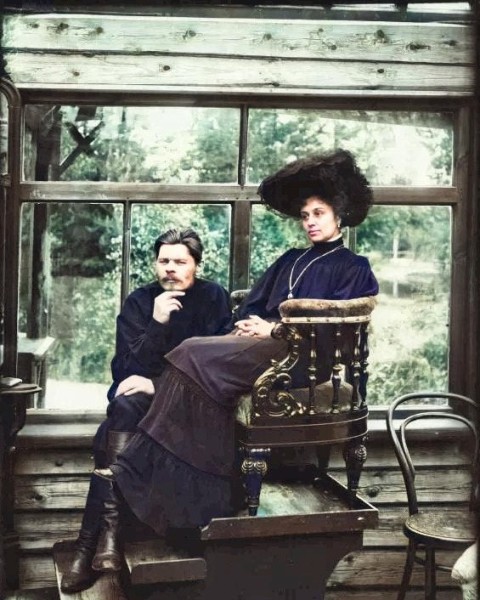
Maxim Gorky and Maria Andreeva
Viktor Ivanovich Losev (°1939), the compiler of My Poor Poor Master, a book that chronologically brings together all surviving versions of The Master and Margarita, suggests that there was another prototype for Margarita.
Losev refers to the book Marguerite de la nuit (1925) by the French writer Pierre Mac Orlan, pseudonym of Pierre Dumarchey (1882-1970). In that book, the eighty-year-old Professor Georg Faust sells his soul to Monsieur Léon, a reincarnation of the devil Méphisto, making Faust a charming young man who meets the red-haired dancer Marguerite. After falling in love with Faust, Marguerite wants to free him from Méphisto and voluntarily makes an agreement with the devil.
For the trivia: in 1913 author Pierre Mac Orlan married Marguerite Luc (1886-1963), a waitress of the famous cabaret Au Lapin Agile in Montmartre, Paris. Another regular visitor to this cabaret, the painter Pablo Picasso (1881-1973), immortalised this Marguerite on his painting La Femme à la corneille (1904).
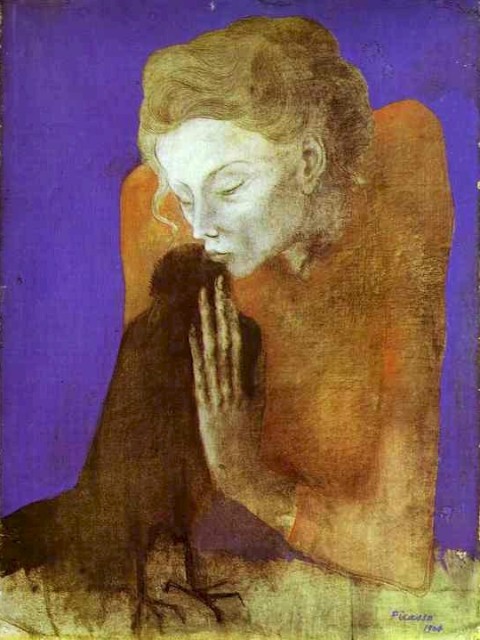
Marguerite Luc (La Femme à la corneille)
However, I have not found any reference to the Marguerite of Mac Orlan anywhere in Bulgakov's writings. I also wonder why Bulgakov would be inspired by a copy, while he knew the originals by Johann Wolfgang von Goethe (1749-1842) and Charles Gounod (1818-1893) by heart, so to speak.
Would-be Margaritas
And then, of course, there are the women who thought that Bulgakov had them in mind when he created the character of Margarita. We made a separate page about them. Click on the arrow below to meet dome would-be Margaritas.
English subtitles
All films based on The Master and Margarita have been subtitled by your webmaster in English, French, Dutch, German, Spanish and Italian. Click on the link belw to find them.





